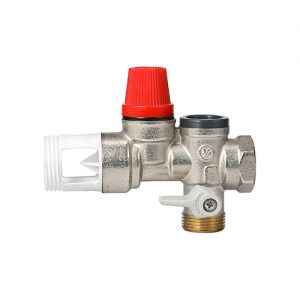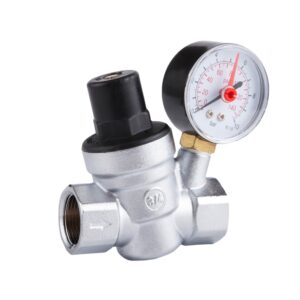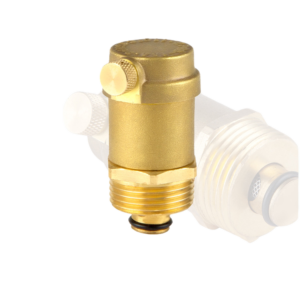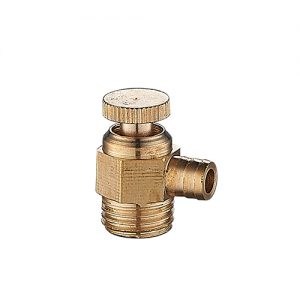Description
Water Shower Thermostatic Valve
JX-0309
- SPECIFICATIONS: Lead-Free Brass body construction; All 3/4″ male connections – DN20 (4x3x2in)
- FUNCTION: Thermostatic mixing valve is designed to connect the hot and cold water and maintain temperature to provide maximum comfort
- TEMPRATURE: Inlet Water Supply Temprature: Cold 39-84 F/4-29 C; Hot 122-203 F/50-95 C; Outlet Water Temprature Range: 95-140 F/35-60 C
- SAFETY: If the cold water stop suddenly, the valve will automatically close to avoid the risk of scalding
- FUNCTION: It offers outstanding anti-scald and anti-chill protection, allowing you to quickly achieve and maintain the ideal temperature setting for a more enjoyable shower experience
-

water shower thermostatic Mix valve Water Thermostatic Mixing Valve
A water thermostatic mixing valve is essential to a modern plumbing system. It is designed to control the temperature of hot and cold water, ensuring that it stays within a safe range for human contact. This helps to prevent scalding or other potential hazards associated with hot water temperatures. In addition, these valves are also used to maintain a constant temperature across all outlets in the plumbing system, providing consistent comfort levels throughout the home or business.
The thermostatic mixing valve combines two streams of incoming water from both hot and cold supplies into one outlet at the desired temperature. The unit’s internal mechanism contains a temperature-sensing element and a diaphragm-operated control valve, which work together to maintain an even balance between the two inputs. To adjust the temperature levels, turn its knob until you have reached your desired setting.
Definition: What Is a TMV?
A water thermostatic mixing valve, or TMV, is a type of valve used to mix hot and cold water to set the desired temperature. The device controls the flow rate and temperature of the water within a specified range. It is often found in public buildings such as schools, hospitals, office buildings, and residential homes where hot water is stored at high temperatures for hygiene reasons.
TMVs help reduces scalding risks by limiting the maximum delivered temperature to a safe level. The valves are designed with a series of ports, allowing them to be installed on both new and existing systems that have already been piped. They also feature an adjustable temperature handle so users can manually adjust the mixed output temperature via a simple rotation mechanism. This ensures maximum safety for vulnerable people unaware of potentially harmful temperatures.
Benefits of TMV
A Water Thermostatic Mixing Valve (TMV) is an important device that helps regulate the water temperature. It is used in residential and industrial applications, providing various benefits for those who use them. TMVs are designed to control the temperature of hot and cold water, ensuring that it never exceeds a specific temperature. This helps prevent scalding or shock, making them vital safety features in any setting where hot water is present.
The installation of a TMV also provides energy savings by controlling the amount of hot water used. By regulating its output, it prevents hot water from being wasted unnecessarily while still delivering comfortable temperatures when needed. Additionally, they help reduce maintenance costs on heating systems as their automatic shutoff feature protects boilers from overheating and pressure surges which can cause damage over time.
Installation Process
Water thermostatic mixing valves are a great way to keep your home’s water supply heated and safe. Installing one in your home isn’t as difficult as it may seem. To ensure that you’re installing the valve correctly, follow these steps for the installation process.
First, ensure you have all the necessary materials to start the installation process. This includes a wrench, plumber’s tape, mounting screws, and plastic anchors. Additionally, ensure that your water thermostatic mixing valve is compatible with your existing hot and cold water lines before starting the installation process.
Next, please turn off your hot and cold water supplies from their respective shutoff valves near each line’s connection point to the mixing valve assembly.
Regulation Standards
Water thermostatic mixing valves are essential to many water systems, including healthcare and commercial applications. Typically used to control the temperature of hot water, these valves help to ensure that the user is not exposed to dangerously hot or cold water temperatures. Regulation standards are in place to guarantee that these thermostatic mixing valves provide a safe and reliable experience for users.
The standards set forth by regulating bodies such as ASSE (American Society of Sanitary Engineering) and WRAS (Water Regulations Advisory Scheme) set parameters for the testing and materials used to construct these valves. For example, ASSE 1071 compliance requires that all components meet specific criteria for durability and performance before being allowed on the market. WRAS also provides testing guidelines so purchasers can be sure their product meets current legislation requirements before installation.
Maintenance Considerations
Water thermostatic mixing valves are an essential component in many industrial and commercial buildings, ensuring that hot and cold water is mixed correctly to provide a safe source of water for use. While these valves require minimal maintenance, there are several considerations for owners and operators to keep in mind to ensure the safe operation of their system.
First, it’s important to have your valve regularly inspected by a professional technician or engineer. As part of this inspection process, any components, such as gaskets or seals, should be replaced if worn or damaged. Additionally, the manufacturer’s maximum temperature setting should be checked against the actual temperatures delivered from the valve to ensure safe operation.
Finally, it is also essential to check for any signs of corrosion and sediment buildup on valves that remain idle for long periods.
The water thermostatic mixing valve is essential to public health and safety. It controls temperatures in hot water systems, preventing scalding from high temperatures or freezing from low temperatures. This ensures a safe environment for all users of any hot water system.
The use of a water thermostatic mixing valve is not only beneficial, but it is also increasingly necessary due to stricter regulations on temperature control in many areas, especially concerning public health and safety. Not using one can result in costly fines or even legal action against individuals and organizations who fail to adhere to these regulations—as such, installing a water thermostatic mixing valve is essential for any system which uses hot water.
A thermostatic Mixing Valve is a valve that blends hot water (stored at temperatures high enough to kill bacteria) with cold water to ensure constant, safe outlet temperatures preventing scalding. They shut off rapidly during a hot or cold supply failure to prevent burning or thermal shock.
Thermostatic shower valves are a relatively new type of water shutoff valve designed to control the temperature of your showers. They can be very beneficial for those who need to conserve water, as they will help you maintain a consistent temperature and save money on your utility bills. There are many different thermostatic shower valves available, so it is essential to know what each one does before deciding which type is best for you—three different types: the standard thermostatic valve, the thermostatic diverter, and the digital thermostatic valve.
A shower timer valve is a water-saving device for showers that regulates the temperature of your shower. You can set it to turn off after a specific amount of time has passed, which will help you save money on utility bills by conserving both energy and water. It’s easy to install – all you have to do is place it over an existing shower or tub faucet and tighten it with your fingers! This type of thermostatic valve typically comes in models that automatically last anywhere from 60 seconds to 15 minutes before shutting off, so choose one depending on how long you would like your showers to be. Some people even purchase multiple timers, as they are highly affordable! But they are also great for increasing the safety of your household. You will never have to worry about anyone getting scalded by suddenly changing water temperatures or leaving a faucet running when unattended again!
A shower Mixing Valve is another type of thermostatic water shutoff valve designed with one purpose – to ensure you always have an ideal temperature while showering. This type typically has two knobs that allow you to control both hot and cold water flow rates separately. It’s a good idea to purchase a model that will enable you to adjust these settings within small increments, as this can help prevent sudden changes in temperature from occurring. We must mention that this type of valve is not recommended for those who have more minor children or pets, as it can be effortless to adjust the settings accidentally.
Shower Volume Control Valve: This type of thermostatic valve comes with a dial that you turn until your ideal temperature has been reached – then voila! It’s important to note that this model usually doesn’t allow any adjustments like other models (which means there will never be any sudden shifts in temperature). When compared to an ordinary faucet knob, the volume control valve makes maintaining consistent temperatures more effortless than ever before







